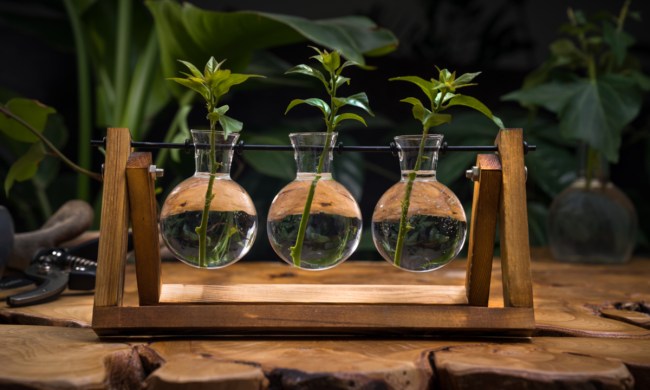If you dread thunderstorms or rain showers because they leave your yard sopping wet for days, a rain garden might be the solution for you. As gardeners, we’re always looking for ways to treat and fit things within our homes naturally. A rain garden can solve many problems homeowners have with a natural and beautiful solution.
What is a rain garden?
Rain gardens are planted in a depressed area, usually formed on a natural slope in landscaping, and contain moisture-loving, native plants. These gardens capture rain from roofs, parking lots, driveways, and streets. It takes this water that would otherwise fill and destroy culverts, pods, streams, and other natural water systems and allows it to soak slowly and naturally into the soil. Rain gardens are an affordable and accessible solution for residential storm runoff issues.
Rain showers may not seem like they’re producing a lot of water until you do the math. For example, an inch of rain on 1,000 square feet is 623 gallons of water. That’s a lot of water! Imagine 623 gallons of milk being dumped down the drain. Instead of letting that natural resource go to waste, catch the water with a rain garden and grow something beautiful!
The benefits of a rain garden
In areas where neighborhoods and cities are inundated with parking lots, driveways, and roofs, rainwater can cause huge problems for both structures and surrounding natural waters. When rainwater rushes down gutters and into culverts, the water table gets filled with contaminants that otherwise would naturally filter out through the soil. Rain gardens take the run off and allow it to slowly soak into the ground. This process filters out contaminants the water picked up along the way and recharges the groundwater. When done correctly, it can reduce the amount of flooding during heavy storms.
In addition, it’s recommended that rain gardens be filled with native plants. These plants are already accustomed to the area and need less maintenance. Plus, since the gardens are naturally watered, they ultimately save on water usage and add a beautiful area to your yard. Save time, save money, and save the environment? It sounds like a win-win-win situation!
The use of native plants in rain gardens is crucial to why they are so good for the ecosystem around your home. The native plants invite essential pollinators including bees and butterflies. The chemicals and sprays used today are exterminating an alarming amount of pollinators that are vital to the environment. Rain gardens can be a sanctuary for these amazing insects. These gardens also create an excellent space for birds to find bedding for nests and food from beneficial insects.
If your yard has an issue with standing water that attracts mosquito breeding, rain gardens will help combat that problem, too.
Which native plants should you grow?
Depending on which plant hardiness zone you’re in, your choice of native plants is almost endless. Most designs incorporate perennial flowering plants and plants with more foliage. This mixture creates a balanced feel to the garden.
Although different plants can be used in various zones, a few are used in almost all rain gardens across the U.S.
- Aster is a bushy flowering plant with little purple flowers.
- Daylilies come in many colors and are bright and eye-catching.
- Irises have uniquely shaped purple and white blooms.
- Sedum is a large group of flowering plants that are hardy and grow quickly.
- Coneflowers have daisy-like flowers with large cone-shaped centers.
- Artemisia is also known as mugworts; these plants have beautiful bright green foliage.
- Sedge is a group of plants that grow like large grasses and come in various shades of green.
No matter the type of flowers you choose to put in your rain garden, your home, local waterways, and native plants and insects will thank you. And you’ll do a happy dance when you see your water bill!




